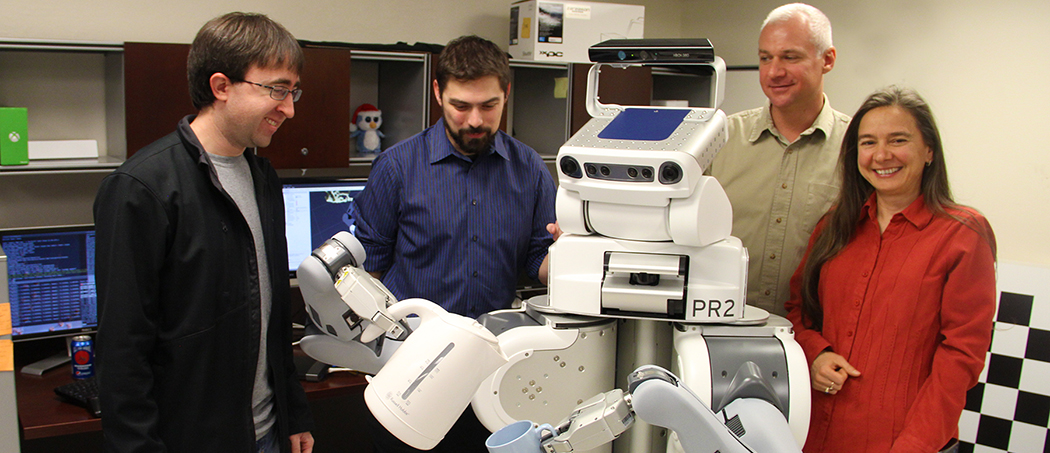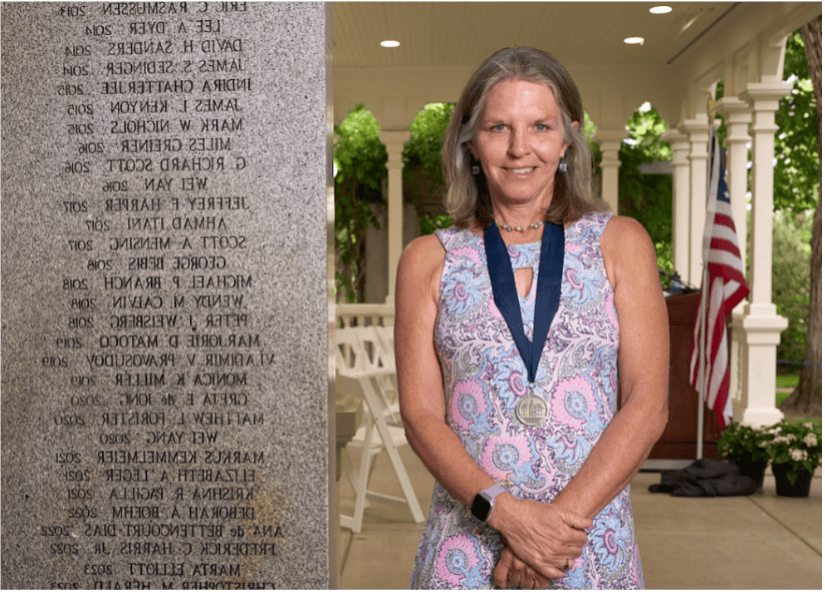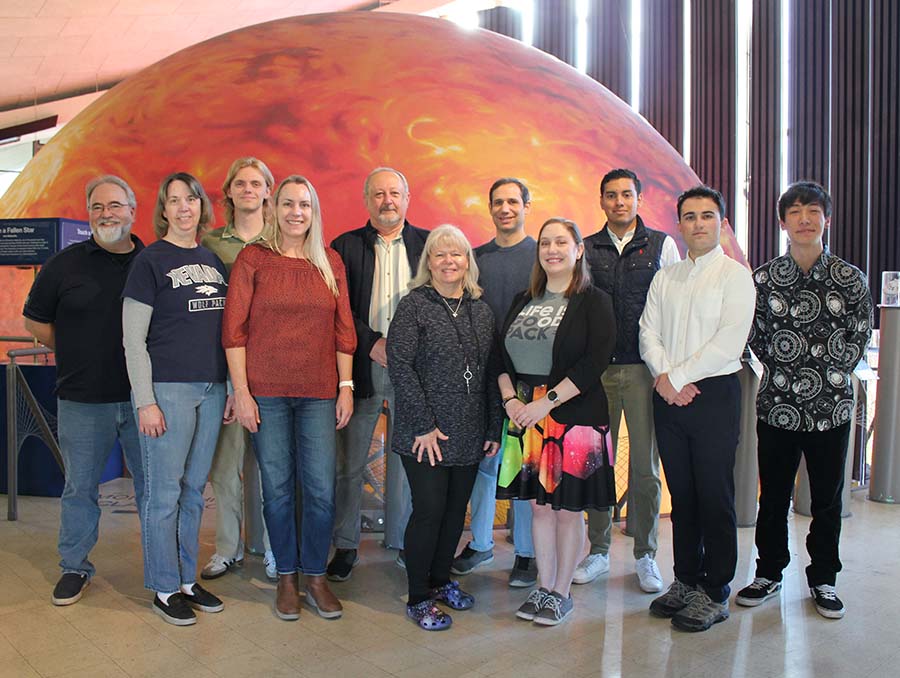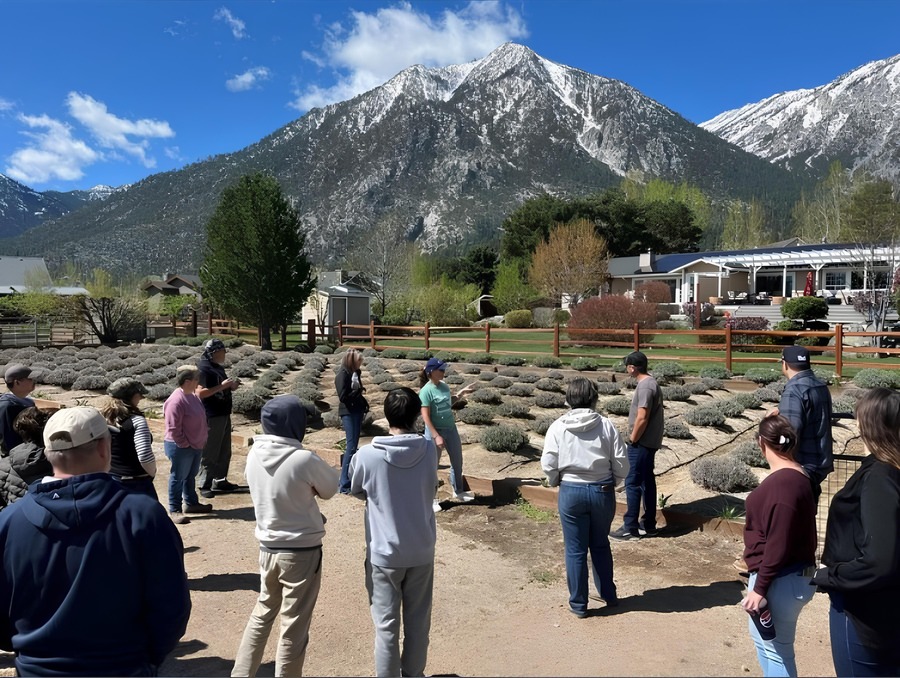There are more robots than people in the Robotics Research Lab at the University of Nevada, Reno, but they haven't taken over yet.
From the 5' 5" tall, advanced PR2 humanoid robot to three small humanoid robots, a cute dog robot and 20 other various types of robots, there are 34 in all - they far outnumber the robotics researchers in the Computer Science and Engineering Department, who conduct a variety of imaginative and innovative research.
The computer science researchers recently demonstrated for local media the first rudimentary steps in programming the advanced autonomous PR2 robot named Ada; so named to honor the first computer programmer Ada Lovelace.
Ada began by interacting with a student, who was preparing a pot of tea. While he prepared the tea, the robot, with its multiple sensors and cameras, watched. By using the software developed by the researchers Ada recognized the student's actions, then inferred his intentions. Ada offered the student some sugar for his tea.
"There's better collaboration between humans and robots if they can anticipate what we will do, or want," Monica Nicolescu, director of the College of Engineering's Robotics Research Lab, said. "These advanced humanoid platforms can do more complex interactions and scenarios. They have more sensors, capabilities and perceptual abilities - they can perceive more about the world and have more natural interactions with their hands - and it's all autonomous."
In the next demonstration, Ada carefully set a dining table. Knowing it needed silverware, a glass, plate and bowl, it carefully chose what it needed from a selection of objects and gingerly picked them up with its highly sensitive fingers and arranged a place setting.
"Compared to older versions of robots, it has significantly enhanced data sensors, better mobility and improved ability to manipulate objects with its 'hands,' with the same sensitivity as human fingers," Nicolescu said. "The robot is not just performing a task we program for it, it's actually perceiving actions and then reacting. That's the difficult part, which can take months to perfect."
"Fingertip sensors can detect texture, over rough or smooth surfaces, and recognize a pattern of the surface through pattern recognition coding, both tactile and visual," David Feil-Seifer, assistant professor in the Computer Science and Engineering Department, said.
The actions were not preprogrammed; instead, the intent recognition was prepared using complex algorithms developed by the computer science faculty and students in the Robotics Research Laboratory and the Computer Vision Laboratory.
"Perception in general is important, and in particular, vision," computer science and engineering Professor Mircea Nicolescu, co-director of the Computer Vision Lab, said. "We are working on solving a number of challenges in computer vision, such as recognizing objects of interest in the scene, tracking people and the objects they interact with, then understanding their higher-level actions and inferring what they are planning to do next."
The advanced robots have some mechanical constraints, but otherwise can mostly do the same things as humans. Monica Nicolescu said they spent hundreds of hours developing the tasks so far.
"It's not like in action movies or on television," she said. "Developing robotics, software and hardware, is time-consuming, methodical yet very rewarding. It takes a long time to just program intricate movements, but to also then have the robot move and respond to human voice or movements, to infer what a human is doing, wants or needs - that's very complex."
The robotics team is working to make the robots more collaborative with people, and each other.
"Having the humanoid form makes it more comfortable for people to collaborate with in homes, manufacturing scenarios or other environments where robots can assist us in daily life," Monica said. "The robot can intervene in an activity and help - it observes and understands. Of course, we have to provide the intelligence through the controllers, but they can learn - we are creating intelligent robots, designing a brain that learns for them - it's a tough challenge."
The lab's other relatively new advanced robot, the six-foot-tall Baxter, was also powered up for the media demonstration. The bulky, red humanoid robot, delicately took a Rubik's cube from a grad student, slowly turned it around, cataloged each side, sensed the colors and then methodically spun the cube until it reached a "solve."
"The Rubik's Cube is the beginning of development for pattern recognition and manipulation for both the robots," Feil-Seifer said. "We want the robot to see the scene, evaluate the current situation and react after making a plan - in some ways similar to the cube." Our goal is to increase the capability every day, every week, every month - working to make the robots do something new."
Feil-Seifer is particularly interested in the type of feedback a robot gives a human and how that feedback changes over the course of an interaction. Generating socially appropriate behavior requires both sophisticated models for human interaction and the computing power for a robot to process those models and respond in a timely manner.
"This research will extend the capabilities of robots to engage in time-extended, flexible interactions and give feedback in a more intelligent manner," he said. "We expect that this will increase human-robot coordination in manufacturing tasks that require repetitive and long-term interaction.
"The goals are to help people, working alongside them for manufacturing, educational or in health care - anywhere a human and robot could work together to accomplish a goal. This research will advance the state-of-the-art in robot perception with algorithms that process and fuse large amounts of data from multiple sensors in real time."
The Nicolescus and Feil-Seifer aren't alone in the huge task of programming and analyzing software for the robots. A number of other people, graduate and undergraduate students who work and learn in the lab are developing software and tweaking hardware to make the robots perform.
The robotics program attracts many students, with 80 more this year. The courses are project based, enabling students to do more than just listen to lectures and read about robots.
"We like that we can provide a lot of hands-on experience for our students," Mircea said. "This will prove invaluable in preparing our graduates for jobs in the areas of robotics and computer vision."
The $282,000 mobile PR2 is one of only 40 worldwide and one of only 16 being used for research at universities in the United States. It was made possible through a grant from the Office of Naval Research.
"We've been working with the Office of Naval Research on human-robot interaction for nine years," Monica said, "Our PR2 has opened up our horizons to continue working on intent recognition, some of which hasn't been possible for us until now, with more complex interactions and scenarios - the new robots can perceive more about the world."
The grant is part of a commitment to world-improving research, student success and outreach benefiting the communities and businesses of Nevada. The grant comes through the Navy's Defense University Research Instrumentation Program, or DURIP allows universities to purchase state-of-the art equipment that enhances research related to defense. The award is highly competitive, and in 2014 more than 735 proposals were received and 149 awards were granted.












